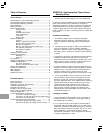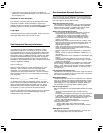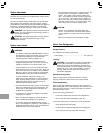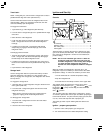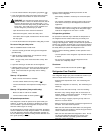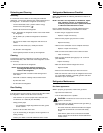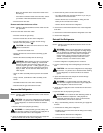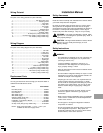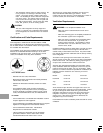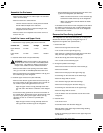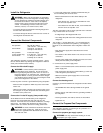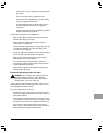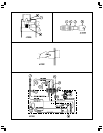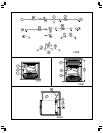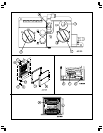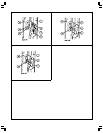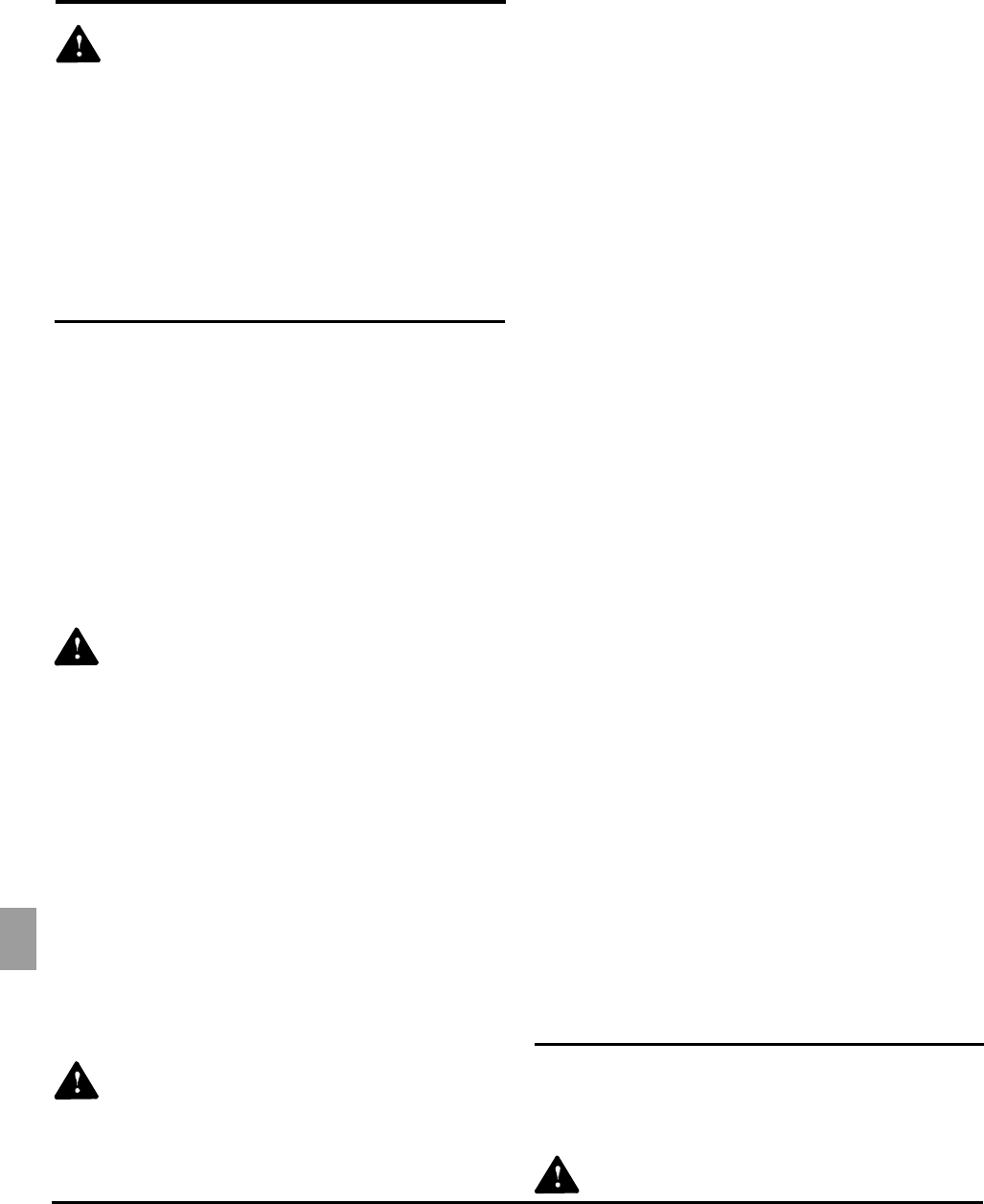
Installation and Owner’s Manual 12
This refrigerator operates on propane gas at a pressure of 11
inches Water Column Propane.
Connect the propane gas supply system:
WARNING:
Be very careful when working on or near
the propane gas supply system.
1. For the best performance, Norcold recommends that you
use the following wire and fuse sizes:
- Measure the distance from the vehicle battery to the
refrigerator:
- If the distance is 0 - 20 feet, use #12 AWG min. wire
size and a 20 amp Max. fuse.
- If the distance is more than 20 feet, use #10 AWG min.
wire size and a 30 amp Max. fuse.
The wire connections must be clean, tight and free of corrosion.
If any of these items are not correct:
- A voltage drop to the refrigerator will occur.
- The voltage drop will reduce the cooling performance of the
refrigerator.
The red wire (+) and the black wire (-) for connecting the DC
power supply are attached to the positive (+) and negative (-)
terminals of the terminal block of the refrigerator. Make sure
that:
- Each DC power supply wire is attached to the correct
polarity wire.
- The chassis or the vehicle frame is not used as one of the
conductors.
- The DC power supply wires including the fuses are routed
directly from the battery to the refrigerator.
2. Connect the D.C. power supply wires:
- Attach a 1/4 inch female Quick Connect terminal to each DC
power supply wire.
- Push each power wire onto the terminal block [1] at the rear
of the refrigerator (See Art01035).
- Make sure each DC power supply wire is on the correct
polarity terminal.
Connect the chassis ground:
Connect a ground wire between the refrigerator and the vehicle
chassis:
- Use #8 AWG wire with a #8 ring terminal for the ground
wire.
- Remove the nut and washer from the grounding terminal of
the refrigerator.
- Put the ground wire, the washer, and nut on the terminal.
- Tighten the nut.
Connect the Propane Gas Components
WARNING: Make sure the seal strips are not broken,
are completely around the refrigerator mounting flanges,
and are between the refrigerator mounting flanges and
the wall of the enclosure. If the seal is not complete,
exhaust fumes can be present in the living area of the
vehicle. The breathing of exhaust fumes can cause
dizziness, nausea, or in extreme cases, death.
- Put screws through the refrigerator mounting flanges and
into the wall of the enclosure.
- Put screws through the braces at the lower rear corners of
the refrigerator and into the floor.
Install the Refrigerator
Connect the Electrical Components
AC Operation 120 volts AC voltage
( 108 volts min. - 132 volts max.)
Current Draw: 1.3 Amps at 110 volts AC
1.4 Amps at 120 volts AC
DC Operation 12 volts DC voltage
(3-way models only) (11.5 volts min. - 15.4 volts max.)
Current Draw: 11.7 Amps at 12 volts DC
13.6 Amps at 14 volts DC
This refrigerator operates on these electrical sources. Opera-
tion out of these limits may damage the refrigerator’s electrical
circuit parts and will void the warranty.
Connect the 120 volts AC supply:
WARNING:
Connect the AC power cord only to a
grounded three-prong receptacle. Do not remove the
round ground prong from the power cord. Do not use a
two-prong adapter or an extension cord. Operation of the
refrigerator without a correct ground could cause danger-
ous electrical shock or death if you are touching the metal
parts of the refrigerator or the vehicle.
Put the AC power cord into a grounded three-prong receptacle:
- Make sure the receptacle is within easy reach of the lower
intake vent.
- Make sure the power cord does not touch the burner cover,
the flue pipe, or any hot component that could damage the
insulation of the power cord.
Connect the 12 volts DC supply (3-way models only):
As the distance from the vehicle battery to the refrigerator
increases, the correct AWG wire size and fuse size also
increase. If the wire size is too small for the distance, a voltage
drop occurs. The voltage drop decreases the output of the
system heater and causes decreased cooling performance.
WARNING: A circuit overload can result if the wires and/
or fuses are not the correct size. Refer to your local
codes or the applicable RVIA Standards for the correct
wire and fuse sizes.



